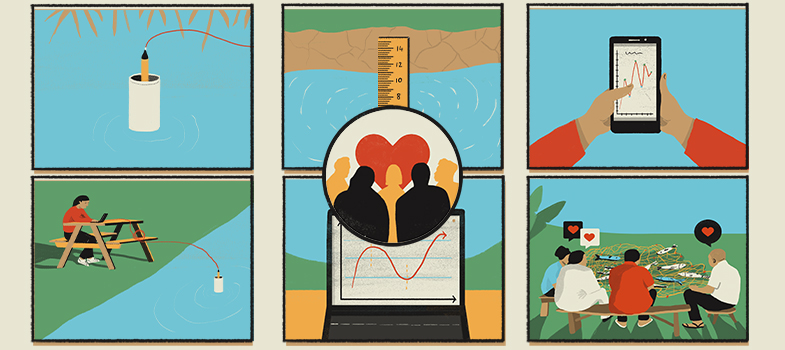How to develop a community monitoring programme
2. Plan
1. Community consultation - Hold a meeting, with as many representatives from your community as possible, to discuss and identify the environmental challenge the community would like to understand i.e. develop a community consensus on what should be monitored (see Unit 4). Examples include water pollution, flooding or loss of fish species.
2. Community engagement - Undertake further community engagement through workshops, interviews, focus groups etc. (see Unit 1) to gain perspectives on the environmental challenge and to see who would like to be involved in being part of the community project team and/or being involved in the monitoring and data analysis and reporting.
3. Community project team - Set up a community project team with individuals from the community with the required interest and skills. The role of this team will be to develop and oversee the monitoring programme. If interested community members do not have the required skills to undertake the role then training of those individuals could take place. It is important that the project team has representatives from across the community so that the whole community feels involved. The project team should then work together to develop the monitoring programme, following the steps below and described in detail in Unit 4.
4. External support - Review whether your community requires the input from an external expert during the design of the monitoring programme? When this occurs, the community and scientists, from outside the community, work together to deliver the monitoring. For example, a community might want to know what the quality of the water in a river is. They might ask a scientist from a local university about what to measure, how to collect any water samples and how they would be analysed so they can understand how to measure water quality and they might work with the scientist and students to carry out the monitoring.
5. Which techniques? - Identify the most appropriate technique or techniques to collect the data - this will also be dependent on your available time, resources and budget to undertake the survey. This is covered in more detail in Unit 4.
6. Who will collect the data? - Determine the monitoring team. It is important to consider who will actually be doing the monitoring i.e. collecting the data. This is an opportunity to involve the wider community but you should consider the following:
- Is using wider community members to collect the environmental data the best approach? It is important to consider whether the community members have the appropriate skills and experience to conduct the data collection. If interested community members do not have the required skills to undertake the monitoring then training of those individuals could take place.
- It is important that the monitoring/data collection team has representatives from across the community so that the whole community feels involved in the monitoring.
8. Monitoring plan - After determining how you are going to collect the data, who is going to collect the data, when you are going to collect the data and where you going to collect the data you will have your provisional monitoring plan.
9. Community agreement - Once the monitoring programme plan has been developed, carry out final consultation with the wider community to make sure they are happy with the plan before commencing the data collection.
